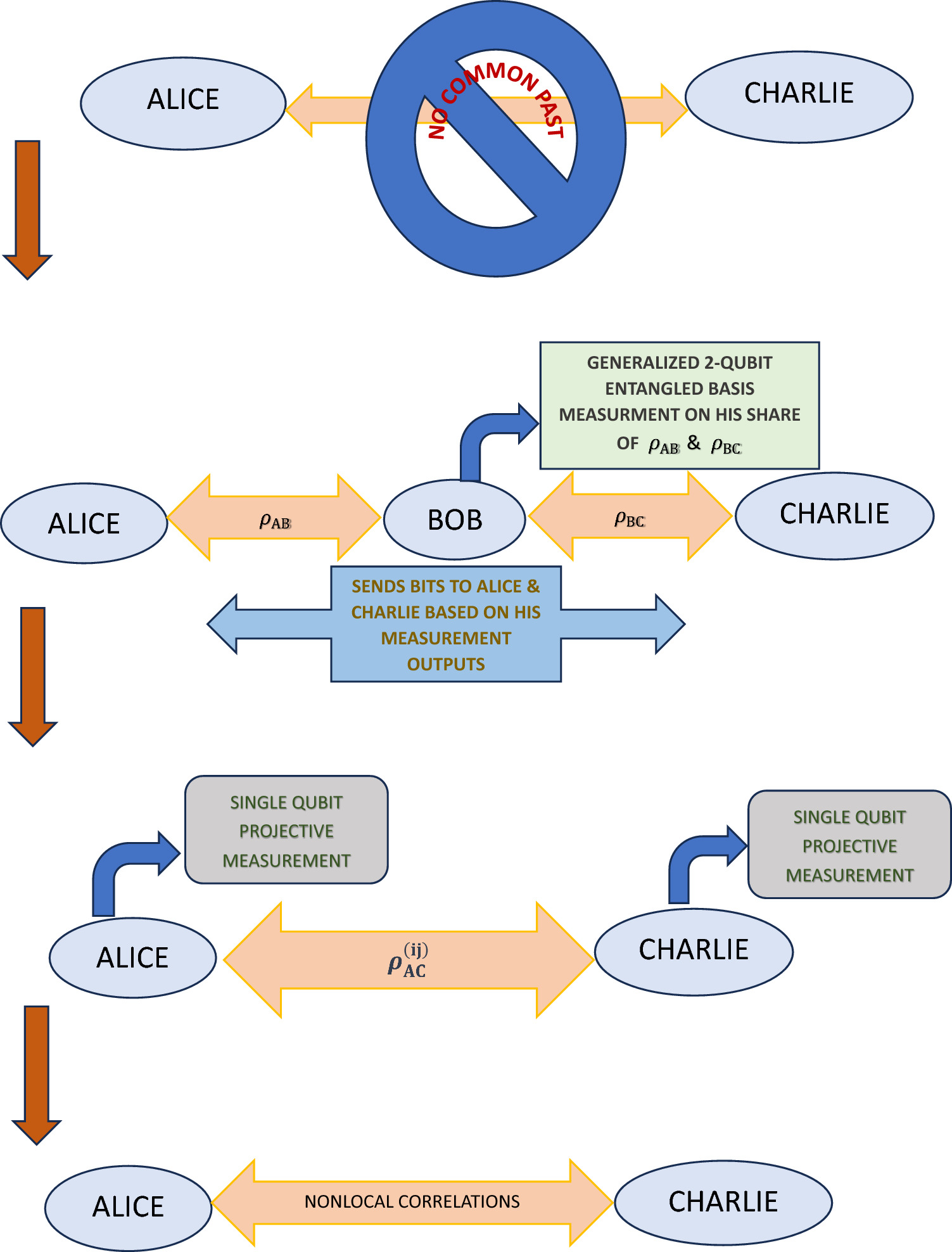https://doi.org/10.1140/epjp/s13360-025-06380-3
Regular Article
Arbitrary two-qubit entangled basis measurement in nonlocality activation
Department of Mathematics, Government Girls’ General Degree College, Ekbalpore, 700023, Kolkata, India
Received:
17
September
2024
Accepted:
19
April
2025
Published online:
4
June
2025
Over years, for exploiting bipartite hidden nonlocality via quantum networks, Bell-basis is the most commonly used two-qubit entangled basis. In this context it becomes relevant to ask whether any nonmaximally entangled basis can be used for the same purpose. Based on this motivation, present work aims to search for utility of any two-qubit entangled basis for designing tripartite Bell-nonlocality activation protocol. A linear Bell-nonlocality activation protocol based on arbitrary two-qubit entangled basis measurements is introduced here. Several nonmaximally entangled two-qubit bases have emerged to be useful for generating hidden nonlocal correlations via such protocol. Apart from exploring successful nonlocality activation instances, present work has been able to partially identify classes of two-qubit states and also collection of projective measurements along two-qubit entangled bases which are useless from the perspective of Bell-nonlocality activation. The protocol also aids in retrieving Bell-nonlocality in presence of amplitude damping and colored noise.
Copyright comment Springer Nature or its licensor (e.g. a society or other partner) holds exclusive rights to this article under a publishing agreement with the author(s) or other rightsholder(s); author self-archiving of the accepted manuscript version of this article is solely governed by the terms of such publishing agreement and applicable law.
© The Author(s), under exclusive licence to Società Italiana di Fisica and Springer-Verlag GmbH Germany, part of Springer Nature 2025
Springer Nature or its licensor (e.g. a society or other partner) holds exclusive rights to this article under a publishing agreement with the author(s) or other rightsholder(s); author self-archiving of the accepted manuscript version of this article is solely governed by the terms of such publishing agreement and applicable law.





